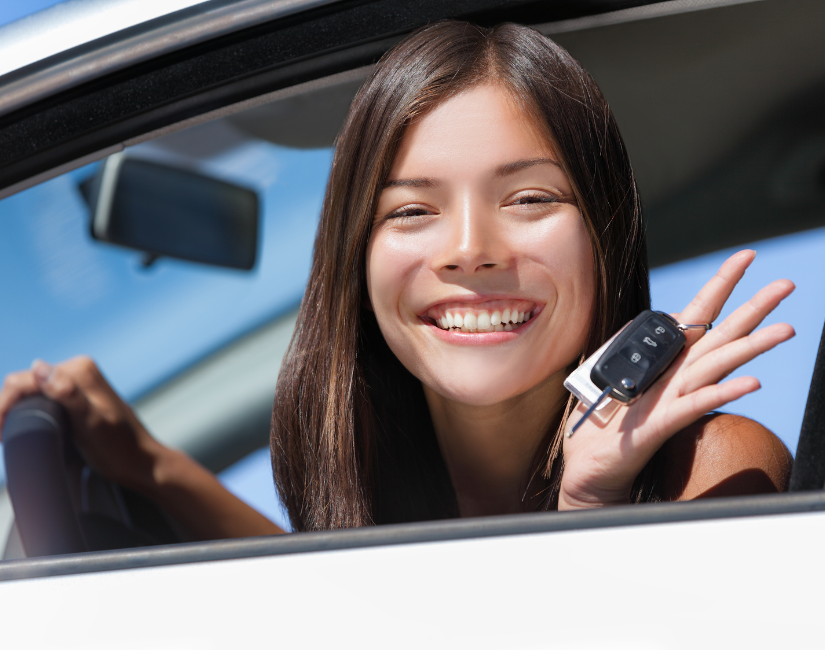The United States has nearly 230 million licensed drivers. Just over 11 million of those drivers are between the ages of 15 to 20 years old, according to the 2020 statistics compiled by the NHTSA (National Highway Traffic Safety Administration.) Tragically, motor vehicle crashes are the leading cause of death for this age group (15 to 20 years old).
The NHTSA reports reveal that an estimated 189,950 young drivers sustained injuries in a traffic crash in 2020 alone, with nearly 2,000 of those teens losing their lives. With numbers that high, approximately 6 teens die every day in a crash involving a young driver.
Parents, guardians, driver education teachers, automotive industry professionals, and law enforcement have a responsibility to teach and protect these young drivers.
Risks Associated with Being a New Driver
New drivers in general, regardless of age, are at a higher risk for accidents simply because they have less experience behind the wheel. However, the risks associated with being a new teen driver are much higher and, unfortunately, can lead to accidents, injuries, and even loss of life.
A driver’s license is a tremendous responsibility and some teens can lack the maturity needed to be safe behind the wheel consistently. Teens can also exercise poor judgment due to more limited life experience and are more prone to getting distracted.
GDL System Helps Teens Adjust to Driving
To help lower the risks associated with being a new teen driver, states have implemented the Graduated Drivers Licensing (GDL) system. The GDL approach restricts driving privileges, such as nighttime driving, according to what stage of experience a new driver has achieved.
According to national studies conducted by the Insurance Institute for Highway Safety (IIHS) and the Highway Loss Data Institute (HLDI), strong restrictions on nighttime driving and teenage passengers, as well as delayed licensing age, reduce fatal crashes and insurance losses for teenage drivers. In addition, the studies found that delaying permit age reduces fatal crashes and that increasing practice hours reduces insurance losses.
GDL Systems Vary From State to State
The GDL concept was first adopted by New Zealand in 1987. It wasn’t implemented in the United States until nearly a decade later. In 1996, Florida became the first state to have a Graduated Drivers Licensing system. Today, all states plus the District of Columbia have a GDL, but the systems vary, so it’s important for individuals to know how it works in their own states. In general, there are three stages to a GDL system:
- Supervised learner’s period. During the learner’s permit period, new drivers typically have to drive with a licensed driver over 21 in the vehicle. 40 driving hours are usually required to be tracked and presented at the time of the driver’s exam.
- Intermediate license. This stage does not require a licensed driver to be in the new driver’s vehicle. However, there are often limitations on the number of passengers allowed in the vehicle and even driving in the late hours of the night.
- Full license. This is your full, standard driver’s license without limitations.
The minimum age in most states for a teen to drive without being accompanied by an adult is 16, but teens may have limited night driving privileges. Most states also have restrictions regarding teen drivers transporting non-family members, especially if the passengers are other teens or children.
For more details, the Governors Highway Safety Association has the GDL system broken down by state, including all restrictions.
Most Common Dangerous Driving Practices By Young Drivers
Dangerous driving practices most often perpetrated by young drivers are the types of behaviors that get a driver pulled over. These may include:
- Distracted driving (texting, social media scrolling, eating, putting on makeup)
- Drowsy driving
- Driving under the influence of alcohol, drugs, or other substances
- Speeding and reckless driving (swerving, improper lane changes)
- Not wearing a seatbelt
Talking to Teens About Being a Safe and Capable Driver
Since inexperience is one of the most pervasive contributing factors in teen accidents, the more supervised behind-the-wheel time that parents and guardians can give their teens, the better. Parents should talk to teens about the responsibilities of driving, the rules of the road, and how it’s a skill that must be continually honed.
Supporting programs such as TeenDrive365, sponsored by Toyota and Discovery Education, and Parents Are the Key to Safe Teen Drivers, organized by the Centers for Disease Control (CDC), can have a significant impact on teen driving safety. These organizations can provide invaluable resources for families and communities. These programs have free resources for educators, pediatricians, parents, and teens, such as this interactive lesson plan on The Science Behind Safe Driving.
The Role of Law Enforcement in Promoting Safe Teen Driving Safety
The primary role of police officers is to keep the community safe by enforcing driving laws. Law enforcement can also play a key safety role by supporting teen educational programs and establishing an influential presence in the neighborhood. These preventive measures can go a long way toward promoting a culture of safety and awareness among teen drivers.
Kustom Signals Supports Police Efforts with Tools to Enforce and Encourage Safe Driving
Law enforcement agencies must focus on identifying and putting a stop to dangerous driving that injures and kills all ages daily. Look to Kustom Signals’ fourth-gen handheld video LIDAR, the LaserCam 4 as the tool for tracking and recording speed and other dangerous driving behaviors.
The LaserCam 4 features our AutoTrak™ for target tracking with continual zoom and optimized target-specific speed measurements, as well as enhanced post-recording options. The high-performance technology allows for capturing infractions like distracted driving, improper cell phone use, and not wearing a seatbelt.
Kustom Signals also has RADAR speed displays and speed trailers to provide a law enforcement presence that will remind all drivers, including teens of the importance of speed awareness.
To learn more about how Kustom Signals speed enforcement solutions and how we can support your agency, contact us today.

